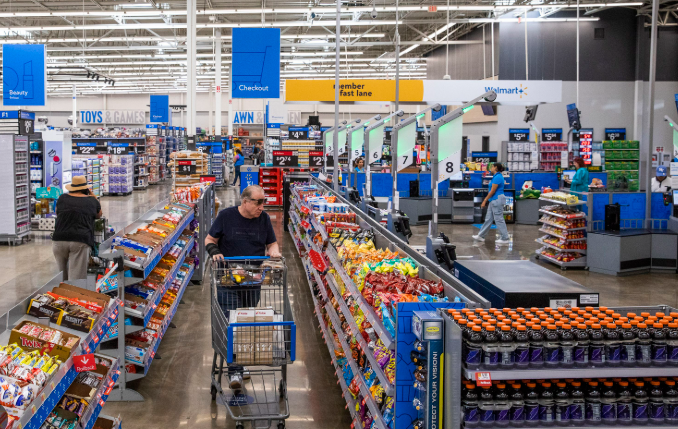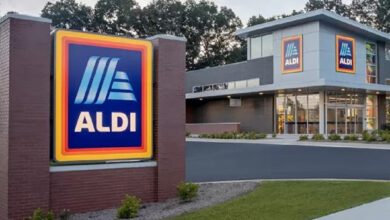Walmart Shoppers! Must-Know Tips for Your Next Visit

For decades, Walmart has been the defining face of American retail — a place where affordability meets accessibility and where millions of shoppers turn for everything from groceries to electronics. But in recent years, a quiet revolution at checkout has tested the patience of customers nationwide. The rise of self-checkout, once heralded as the future of retail efficiency, is now forcing Walmart to rethink how technology and human service coexist in its stores.
ADVERTISEMENT
When self-checkout lanes first appeared, the promise seemed simple: faster service, shorter lines, and greater independence for customers. For shoppers picking up a few quick items, the change felt like a win. Walmart could process more transactions with fewer employees, reducing labor costs while meeting demand in an increasingly self-service economy.
ADVERTISEMENT
But as time went on, cracks began to show. Machines froze mid-transaction, barcodes misread, and sensors routinely flagged the dreaded “Unexpected item in bagging area” alert. Shoppers found themselves stuck waiting for an attendant to override the machine — the very scenario self-checkout was meant to avoid.
ADVERTISEMENT
For many, what was supposed to be convenience became irritation. Large carts of groceries slowed everything down. Families juggling kids, coupons, and loyalty apps found the process chaotic. Older customers or those less comfortable with technology felt alienated by a system that seemed to value efficiency over experience. Social media soon became a public complaint board filled with frustrated Walmart patrons venting about broken scanners, confusing prompts, and the disappearance of friendly cashiers who used to greet them by name.
Efficiency vs. Experience
Internally, Walmart executives couldn’t ignore the growing feedback. Data showed that while self-checkout lanes reduced labor costs, they came with hidden trade-offs — namely, declining customer satisfaction and a troubling rise in “shrinkage,” retail’s industry term for unaccounted inventory losses.
Shrinkage can include accidental scanning errors, deliberate theft, and system misreads. Studies across the retail sector have found that self-checkout stations — while convenient — make it easier for items to go unpaid. Some shoppers take advantage of the confusion, intentionally “forgetting” to scan expensive products or slipping items into bags without detection.
One Walmart district manager, speaking anonymously to industry outlet Retail Dive, summarized it bluntly: “Self-checkout saves money on payroll, but it costs us on honesty. You’re trading cashiers for cameras, and that’s not always a fair exchange.”
In response, Walmart began to pivot. The company has quietly reintroduced more staffed checkout lanes across hundreds of stores, particularly in high-traffic regions. Instead of eliminating self-checkout altogether, the retailer is pursuing what it calls a “hybrid model” — blending automation with traditional cashier service.
The idea is simple but strategic. Shoppers who want speed and independence can still use self-checkout. Those who prefer assistance, have larger orders, or just miss human interaction can return to a staffed lane. The balance, Walmart hopes, will restore the sense of trust and community that originally defined its brand.
A National Retail Correction
Walmart’s recalibration mirrors a larger trend across U.S. retail. Many major chains — from Kroger to Target to Dollar General — are quietly rethinking the automation-first strategy that dominated the 2010s. For years, the assumption was that customers preferred independence over interaction. But recent consumer research paints a different picture: people may like convenience, but they still crave connection.
In a 2025 study from Morning Consult, nearly 68% of shoppers said they felt more “valued and secure” when checking out with a human cashier. Another 54% reported that self-checkout “added stress” to their experience.
Retail psychologist Dr. Kelly Marks calls it the “illusion of convenience.” “Technology can simplify transactions,” she explains, “but it can’t replace empathy. When a cashier helps you bag groceries, answers a question, or simply smiles, that moment of human acknowledgment reinforces loyalty. A machine can’t do that.”
For Walmart, which serves over 240 million customers each week, restoring that human touch could be the difference between irritation and loyalty — between a quick errand and a memorable shopping experience.
The Return of the Cashier
Inside several pilot stores in Arkansas, Texas, and Ohio, Walmart has already implemented a blended checkout model. Customers are greeted by designated attendants who guide them to either a staffed lane or a self-service kiosk depending on the size of their order. Large purchases, family grocery hauls, and bulk items are handled by human cashiers who can process them more efficiently than a customer hunched over a blinking screen.
The result? Shorter lines, fewer technical errors, and less visible frustration. Store managers report that the presence of cashiers has improved morale not just among customers but among employees themselves.
“I missed talking to people,” said one cashier in Bentonville. “Self-checkout took away a part of our job that wasn’t about scanning — it was about connection. Now we get that back.”
Beyond morale, reintroducing cashiers has had another measurable impact: a reduction in theft. With employees back at the registers, oversight has improved dramatically. Managers note that fewer unscanned items slip through unnoticed, and the number of “false alarms” requiring staff overrides has dropped by nearly 40% in some test markets.
Striking the Balance Between Tech and Touch
Walmart’s experiment is being closely watched by the rest of the retail world. If it succeeds, it could signal a major shift in how companies approach automation — not as a replacement for people, but as a tool to support them.
Retail consultant Lisa Hernandez calls Walmart’s pivot a “cultural correction.” “For years, automation was treated like an arms race. Who could replace human workers fastest? Now we’re realizing that customers never asked for that. They asked for convenience, yes, but not at the cost of warmth or service.”
The move also reflects growing awareness of “automation fatigue,” a phenomenon where consumers grow weary of doing everything themselves — from scanning groceries to assembling furniture to navigating phone trees just to reach a human representative.
By restoring choice — giving shoppers the option to self-checkout or interact with a person — Walmart is betting that flexibility will drive satisfaction more than pure speed ever could.
Beyond Checkout: A Shift in Philosophy
This change in strategy extends beyond the front end of the store. Walmart’s broader retail philosophy is evolving toward “tech with empathy” — using automation to enhance, not replace, human service. The company has begun retraining employees to specialize in customer assistance, digital ordering, and personalized service.
Walmart’s leadership says the future isn’t cashier-less — it’s customer-centered. “We’re not just moving products,” said one regional executive. “We’re serving people. The best retail experience is one that feels easy, human, and reliable.”
What This Means for Shoppers
For Walmart shoppers, the transition means a more balanced experience. You’ll likely notice more traditional cashiers returning to lanes during peak hours, especially in supercenters. Self-checkout will remain for those who prefer it, but human oversight will be more visible.
The company is also investing in improved machine learning to reduce errors at kiosks and expanding its mobile checkout system, which allows customers to scan and pay directly from their phones before heading to a dedicated exit lane.
In short, Walmart isn’t turning back the clock — it’s learning from its mistakes. By blending automation with personal service, the retailer hopes to rebuild the sense of trust and ease that originally made it America’s go-to store.
For customers, that means fewer beeps, fewer malfunctions, and more human moments — the kind that remind people they’re more than just a transaction.
Because in the end, Walmart’s greatest innovation might not be its machines at all — but its decision to bring the people back.




